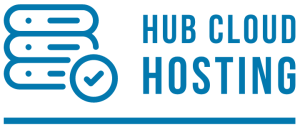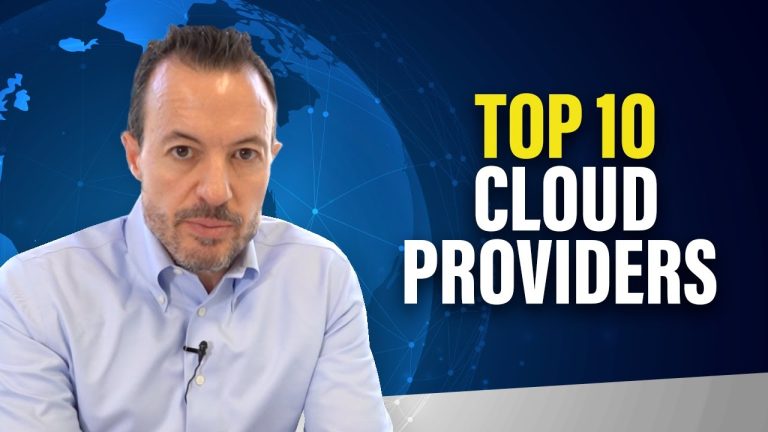“The Importance of Budget Alerts in Cloud Computing” is an article that highlights the potential cost pitfalls and dangers of uncontrolled cloud computing. It starts by sharing a real-life story of a startup that incurred a $72K bill in just 2 hours on Google Cloud. The article then offers tips on how to control costs on popular cloud platforms such as AWS, GCP, and Azure. It emphasizes the significance of setting up budget alerts and provides advice on avoiding issues like infinite loops, understanding service scaling, and considering algorithm complexity. Additionally, the article emphasizes the importance of securing applications and protecting API keys to prevent data breaches and potential cost increases.
The article aims to provide valuable insights and practical guidance to individuals and businesses using cloud services, helping them avoid costly mistakes and optimize their cloud computing usage. It serves as a resource for those seeking to understand the potential financial risks associated with cloud computing and to implement effective cost control measures.
The Cost of Out-of-Control Cloud Computing
Out-of-control cloud computing can quickly become very expensive and have severe financial implications for businesses. A recent example is a startup that accumulated a staggering $72,000 bill in just 2 hours on Google Cloud. This highlights the need for businesses to have effective cost control measures in place when using cloud computing services from providers like AWS, GCP, and Azure. By understanding the different pricing models, choosing cost-effective services, optimizing resource allocation, utilizing reserved instances and savings plans, monitoring and analyzing resource usage, implementing autoscaling, taking advantage of spot instances, using serverless computing, leveraging right sizing, and implementing cost allocation tags, businesses can significantly control and reduce their cloud computing costs.
Tips to Control Costs on Cloud Computing Services
Understanding the Different Pricing Models
It is essential for businesses to have a clear understanding of the pricing models offered by cloud computing service providers. Different providers may have varying pricing structures, such as pay-as-you-go, spot instances, reserved instances, and savings plans. By understanding these models, businesses can choose the most cost-effective options for their specific needs, avoiding unnecessary expenses and maximizing their cloud computing budget.
Choosing Cost-Effective Services
Not all cloud computing services are priced the same. Businesses should carefully evaluate the costs associated with different services and choose the ones that offer the best value for money. This requires analyzing factors such as pricing per hour, data transfer costs, storage costs, and other relevant pricing components. By opting for cost-effective services, businesses can reduce their cloud computing expenses without compromising on functionality and performance.
Optimize Resource Allocation
Efficient resource allocation is crucial for controlling cloud computing costs. Businesses should regularly assess their resource usage and identify potential areas for optimization. By analyzing CPU utilization, memory usage, storage requirements, and network usage, businesses can ensure that they are not over-provisioning resources and paying for unused or underutilized capacity. Right-sizing resources based on actual needs can result in significant cost savings.
Utilize Reserved Instances and Savings Plans
Reserved instances and savings plans are cost-saving options provided by cloud computing service providers. By committing to long-term usage, businesses can secure lower hourly rates for their instances or services. This can be particularly advantageous for workloads that require consistent use over an extended period. By making use of reserved instances and savings plans, businesses can reduce their cloud computing costs and effectively plan their budgets.
Monitor and Analyze Resource Usage
Regular monitoring and analysis of resource usage are critical for cost control in cloud computing. Businesses should implement monitoring tools that provide insights into resource consumption and utilization. By identifying trends, peaks, and potential inefficiencies, businesses can make informed decisions about resource allocation and take proactive measures to optimize costs. Monitoring resource usage can also help identify any unusual or unexpected patterns that may indicate errors or inefficiencies, enabling businesses to take immediate action and prevent cost overruns.
Implement Autoscaling
Autoscaling is a valuable feature that allows businesses to automatically adjust their resources based on demand. By setting up autoscaling policies, businesses can ensure that they have adequate resources available during peak periods while scaling down during periods of lower demand. Autoscaling can help optimize costs by aligning resource allocation with actual usage, eliminating the need to over-provision resources and reducing expenses.
Take Advantage of Spot Instances
Spot instances offer significant cost savings compared to regular instances. These instances are available at significantly reduced prices but come with the risk of being interrupted if the spot price exceeds the bidder’s maximum price. However, for workloads that can tolerate interruptions or have variable resource requirements, spot instances can be a cost-effective option. By leveraging spot instances, businesses can reduce their cloud computing expenses without compromising on performance.
Use Serverless Computing
Serverless computing eliminates the need for businesses to manage and provision infrastructure resources. With serverless architectures, businesses only pay for the actual compute time and resources used. This can result in cost savings, particularly for workloads with sporadic or unpredictable demand. By adopting serverless computing, businesses can optimize costs by eliminating the need to provision and pay for unused resources.
Leverage Right Sizing
Right sizing involves matching the size of cloud resources, such as instances or storage, to the actual needs of the workload. By accurately assessing the resource requirements of their applications, businesses can select the appropriate instance types and sizes, ensuring that they are not overpaying for unnecessary capacity. Right sizing allows businesses to minimize costs by using resources that align closely with their application’s demands, avoiding over-provisioning.
Implement Cost Allocation Tags
Cost allocation tags are labels or metadata that can be attached to cloud resources to categorize and track costs. By implementing cost allocation tags, businesses can gain granular visibility into their cloud spending and allocate costs accurately to different departments, projects, or services. This enables businesses to identify areas of high expenditure, implement cost controls, and make data-driven decisions to optimize costs.
The Significance of Budget Alerts
What is a Budget Alert?
A budget alert is a proactive cost control measure that notifies businesses when their cloud computing expenses are approaching or exceeding a predetermined budget threshold. Budget alerts can be set up on cloud computing platforms to send notifications via email or other channels, alerting businesses to potential cost overruns or unexpected expenditure.
The Benefits of Setting Up Budget Alerts
Setting up budget alerts offers several benefits for businesses:
- Preventing Cost Overruns and Overspending: Budget alerts provide businesses with real-time notifications when their cloud computing expenses are approaching or exceeding the allocated budget. This allows businesses to take immediate action to prevent cost overruns and address any unexpected expenditure, enabling better financial control.
- Early Detection of Unusual Usage Patterns: Budget alerts can help businesses identify any irregular or unexpected usage patterns that may indicate errors, inefficiencies, or even potential security breaches. By receiving timely alerts, businesses can investigate and rectify any issues promptly, reducing the impact on costs and overall operations.
- Improving Cost Management and Forecasting: Budget alerts provide businesses with valuable data and insights into their cloud computing expenditure. By analyzing budget alerts, businesses can gain a better understanding of their cost drivers, allocate resources more effectively, and improve overall cost management and forecasting.
- Ensuring Financial Transparency: Budget alerts promote financial transparency by keeping businesses informed about their cloud computing expenses in real-time. This transparency enables businesses to make informed decisions, allocate resources more efficiently, and maintain better financial control over their cloud computing operations.
Avoiding Infinite Loops in the Cloud
Infinite loops can have serious financial implications for businesses using cloud computing services. An infinite loop occurs when a process or function continuously repeats itself without any stopping condition. In the cloud computing context, an infinite loop can lead to excessive resource consumption, resulting in skyrocketing costs. Businesses can avoid infinite loops by carefully reviewing their code, implementing proper error handling mechanisms, and thoroughly testing their applications to ensure they do not inadvertently create infinite loops.
Understanding Service Scalability and Configuration
Service scalability and configuration are crucial factors to consider when using cloud computing services. Scalability refers to the ability of a service to handle varying levels of workload or traffic. Businesses should understand how different services scale and configure them accordingly to optimize costs. By ensuring that services scale appropriately and are provisioned based on actual needs, businesses can avoid overprovisioning resources and managing unnecessary expenses.
Impact of Algorithm Complexity on Cloud Computing Usage
The complexity of algorithms used in cloud computing can have a significant impact on resource usage and consequently, costs. Algorithms that are inefficient or have high computational complexity can consume excessive resources and lead to increased expenses. It is essential for businesses to evaluate and optimize their algorithms to minimize their cloud computing usage and optimize costs. By employing efficient and optimized algorithms, businesses can reduce resource consumption and effectively manage their cloud computing expenses.
Securing Your App and Protecting Secret API Keys
Securing applications and protecting secret API keys is crucial for preventing data breaches and potential cost increases. Exposing API keys or having inadequate security measures in place can lead to unauthorized access to resources, resulting in potential misuse and financial loss. Businesses should implement robust security practices, utilize encryption, and follow best practices for securing their applications and protecting sensitive information. By prioritizing app security, businesses can mitigate risks and avoid costly incidents.
Effectively controlling costs in cloud computing is crucial for businesses to avoid financial disasters and optimize their cloud computing budgets. By understanding different pricing models, choosing cost-effective services, optimizing resource allocation, utilizing reserved instances and savings plans, monitoring and analyzing resource usage, implementing autoscaling, taking advantage of spot instances, using serverless computing, leveraging right sizing, and implementing cost allocation tags, businesses can successfully control and reduce their cloud computing expenses.
Additionally, setting up budget alerts provides businesses with real-time notifications, enabling proactive cost control, early detection of unusual usage patterns, improved cost management and forecasting, and financial transparency. Avoiding infinite loops, understanding service scalability and configuration, considering algorithm complexity, and securing applications and API keys are all essential components of a comprehensive cost control strategy in cloud computing. By implementing these measures, businesses can better manage their cloud computing expenses, optimize resources, and achieve cost-efficient operations.







